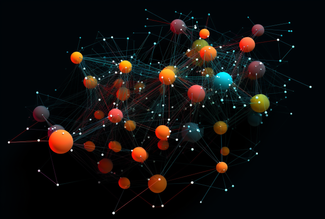
Six search technologies explained
Enterprise search technology is under the spotlight again as rapid advances in AI and natural language processing (NLP) have made it easier than ever to find information anywhere across businesses. But progress hasn’t always been this fast.
Early search technologies were fairly rudimentary. In the 1970s and ’80s, they were largely used in research and case management databases and were powered by mainframes and minicomputers that weren’t publicly available.
It was only in 1993 that search technologies were advanced enough to create the world’s first search engine. And it probably goes without saying that things have changed significantly in the decades since.
Traditional search tools are fast being replaced by new technologies, giving companies better options for accessing and retrieving data. Here, we outline some of the most common. While points of overlap exist between these techniques, with many used in combination with one another, there are still some crucial factors that set them apart.
1. Boolean search
Emerging from the foundations of Boolean logic in the mid-19th century, Boolean search has been a pivotal tool in computer-based information retrieval since the mid-20th century. This search technique operates on logical operators — AND, OR, NOT — to formulate queries that filter and refine search results with precision.
At its core, Boolean search is about establishing clear search criteria. For instance, the use of “AND” between keywords narrows down the search, ensuring results include both terms: “cats AND dogs.” Conversely, using “OR” broadens the search: “cats OR dogs” fetches results containing either term. The “NOT” operator excludes specific keywords: “cats NOT dogs.” Combining these with parentheses allows for more intricate and nuanced searches, such as “(cats OR dogs) AND birds.”
Best use: Database queries, including academic research databases, job search platforms, and legal document repositories, use Boolean search well.
Pros:
-
Precision: The combination of keywords and logical operators means you can create very precise queries.
-
Customization: You have full control over your search queries and can easily filter out irrelevant information in large databases.
-
Complexity: Boolean search can handle complex, advanced, and specialized queries.
Cons:
-
Limited nuance: Boolean search isn’t sensitive to the nuances of natural language, which can become problematic if your keywords have close synonyms or variations.
-
Time-consuming: If your Boolean queries become complex, they can be quite time-consuming to put together. You might have to experiment a fair bit.
-
Not intuitive: Users who aren’t familiar with Boolean logic might find the process frustrating and inefficient at first.
2. Keyword search
Rooted in the dawn of internet search engines in the 1990s, Keyword search is the cornerstone of digital information retrieval. This technique relies on specific words or phrases, termed “keywords,” to scour documents or records containing those particular terms. Before diving into the content, it undergoes an indexing process, laying the groundwork for swift and efficient search outcomes.
In essence, once keywords are punched into a search interface, underlying algorithms leap into action, combing through the indexed content. The end result is a ranked list of matches, often ordered by relevance, to guide the user to the most pertinent information.
Best use: Owing to its versatility, keyword search is omnipresent — from search engines and document management systems to complex databases.
Pros:
-
Simplicity: Keyword search is easy to understand and use, making it widely accessible.
-
Versatility: Keyword search can be applied to various types of content, including text documents, websites, and databases.
-
Flexibility: You have control over the keywords you use, which makes it easy to customize your searches according to your specific needs.
Cons:
-
Relevance: The results you receive may not always be relevant to what you’re after — keyword searches don’t consider context or semantics.
-
Overload: A broad keyword can generate too many results, leading to information overload.
-
Missed information: If a document or record doesn’t contain the exact keywords used in the search query, it may not appear in the results. But it might still be relevant.
3. Vector search
Vector search is used to find items in a large dataset that are similar to a specific query. It’s also called vector space search or similarity search. It started gaining momentum in the early 2010s when deep learning and neural network-based approaches rose to prominence.
Vector search works by representing every item in a dataset (such as a word, a number, or an image) as a high-dimensional vector. This is a numerical representation of the item and contains a large number of dimensions. These vectors sit in a large database of vectorized information, often known as a data index.
When you enter a query, this is also represented as a vector, and the system calculates the similarities between the query vector and the vectors in the dataset. The items with the highest similarity scores are ranked and offered as search results.
Best use: Vector search is best used in recommendation systems. Here, it helps to suggest personalized products, content, or items by identifying similarities between user profiles and available items.
Pros:
-
Versatility: Vector search works for a range of data-types by converting text, images, or numerical data into vector representations.
-
Speed: This type of search can generate complex queries relatively quickly.
-
Caters to multiple modes: It allows you to search for items that are similar in multiple aspects, such as finding images that match a text description.
Cons:
-
Poor precision: When data dimensions grow, vector database’s high-dimensional spaces expand rapidly. This causes data points to seem closer together, making it hard to identify close matches in large datasets.
-
Data quality: Vector search depends heavily on the quality of the vector representations. Results are likely to be poor if vectors don’t capture the data’s features accurately.
-
Data security: Vector search requires all of a company’s data to be stored in a separate vector database, which has to be continuously updated. This significantly increases the risks attached to data-breach, as research shows that vectors can be easily reversed to reveal the original data.
4. Semantic search
Semantic search uses NLP to improve the accuracy and relevance of search results and gained prominence in the late 2000s and early 2010s. It was an improvement on existing technologies because it understood the intent and the contextual meaning of searches beyond the specific keywords used. This significantly improved the quality and accuracy of the results.
Today, semantic search covers a range of technologies and approaches. Some rely on intricate concept mapping, identifying relationships between diverse entities. Others lean into contextual analysis, assessing the backdrop against which a query is set. And, as mentioned above, vector search can also be used to enable semantic search.
Best use: Semantic search is often used in web search engines, e-commerce platforms, and intelligent virtual assistants.
Pros:
-
Improved relevance: By prioritizing intent over exact phrasing, results align more closely with what the user meant, rather than just what they said.
-
Dynamic understanding: As language evolves and new terminologies emerge, it can adapt, ensuring it stays current and relevant.
-
Interconnected insights: By understanding relationships and context, it often surfaces related topics or suggestions that the user might find valuable, even if they weren’t explicitly searched for.
Cons:
-
Lack of precision: By attempting to understand context and relationships, semantic search can sometimes provide a breadth of information. For users seeking a narrow, specific answer, this can feel overwhelming and off-target.
-
Data quality: Semantic search relies heavily on the quality of the data and may need to be combined with other search technologies to ensure it has access to the right information.
5. Federated search
Federated search enables information retrieval across multiple and often disparate sources simultaneously, typically via API. Originating in the early 2000s, it acts as a unified gateway, negating the need to access each source individually.
This technology is especially beneficial in environments where information is distributed across a large number of tools or applications. Federated search bridges these systems, providing a consolidated view and ensuring users don’t miss out on vital data due to it being siloed.
Best use: Federated search is ideal for organizations with fragmented information sources to reduce data silos. It works well in combination with other search technologies (such as RAG) as an alternative to vector databases.
Pros:
-
Comprehensive: Through a single query, federated search allows you to access a wide range of information sources.
-
Quick and efficient: With federated search, you don’t have to manually search through multiple sources individually. This saves time and effort.
-
Easy to integrate: Federated search can be integrated into various applications and platforms.
Cons:
-
Performance: Querying multiple sources at once can put a strain on system performance.
-
Data source compatibility: Data sources may use different search technologies, formats, and APIs, making integration and query processing complex.
-
Security and access control: Federated search systems must handle security and access control for each source to ensure that users only see results they are authorized to access.
6. Retrieval-augmented generation
Retrieval-augmented generation, often abbreviated as RAG, is a more recent approach that combines the best of both retrieval-based and generative models, especially in the context of language models.
This technique gained traction in the early 2020s, driven by advancements in AI and natural language processing. It operates by using a retrieval mechanism to extract relevant snippets or passages from a large corpus of information. Once this relevant information is fetched, a separate generative component constructs a coherent and detailed response using the retrieved data. For example, in question-answering tasks, RAG would first retrieve pertinent documents or passages that contain the answer, and then generate a well-formed answer based on this information.
A notable strength of RAG is its ability to reduce “hallucination” in large language models. By incorporating a retrieval mechanism, RAG ensures that the generative responses are grounded in real and verifiable data from trusted sources, thus reducing the chances of producing erroneous or fictitious content.
Best use: Retrieval-augmented generation is particularly effective in scenarios where context-rich and detailed responses are needed, such as advanced question-answering systems, chatbots, or when creating synthesizing content based on large amounts of reference material.
Pros:
-
Contextual relevance: RAG generates text that is contextually relevant and informative, which improves the quality of responses.
-
Fact-based responses: Because factual information is extracted and incorporated from external sources, the content that is generated is typically factually accurate.
-
Adaptability: RAG models are adaptable and can be fine-tuned for specific domains or applications. This makes this suitable for a wide range of use cases.
Cons:
-
Complexity: Implementing RAG systems can be complicated. Specialist infrastructure and expertise in both retrieval and generation techniques is required.
-
Latency: The retrieval process can introduce latency issues as it searches for relevant information.
-
Quality: The effectiveness of the system depends on the quality of the retrieval process, and if the retrieval process doesn’t find relevant information, the generation component might not produce the right responses.
How to decide
There are lots of search providers out there, and each uses a different combination of technologies. To decide which works best in your organization, consider some of the following:
-
Objective: Modern search technologies can be applied to a range of problems, and many providers have features that extend beyond just search. Think about the critical problem you are trying to solve and make sure the solution is aligned with that goal.
-
Data types: Large enterprises will need to search within diverse data types from different sources and applications. That’s why it’s important to ensure the technology solution works with the critical data-types and has the necessary integrations.
-
Budget and timeline for roll-out: Cost is always going to be a factor, but it’s also worth ensuring the implementation requirements and how long it will take to roll out for large datasets.
-
Data security: Different search technologies necessitate different approaches to data management. For example, many AI-powered search solutions use data-indexes to retrieve information. This approach has some significant downsides when it comes to data security.
Why choose Qatalog
Qatalog’s Enterprise Intelligence platform helps you find knowledge and insights from anywhere across the business in a few seconds. It's powered by our ActionQuery AI engine, which uses a combination of federated search and RAG.
This approach means Qatalog delivers the scalability and data-security of federated search and the accuracy and context awareness of RAG search. It allows for real-time responses across tools and systems, and there’s no need for data-indexing, which means your data stays safe and secure.
For more information, download our new ActionQuery whitepaper or book a demo to see it in action.



